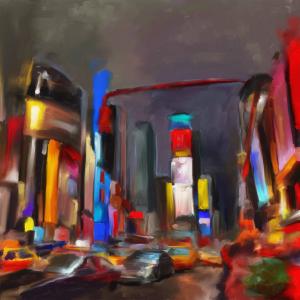Sale on canvas prints! Use code ABCXYZ at checkout for a special discount!

What is Expressionism?
Expressionism emerged simultaneously in various cities across Germany as a response to a widespread anxiety about humanity's increasingly discordant relationship with the world and accompanying lost feelings of authenticity and spirituality. In part a reaction against Impressionism and academic art, Expressionism was inspired most heavily by the Symbolist currents in late nineteenth-century art. Vincent van Gogh, Edward Munch, and James Ensor proved particularly influential to the Expressionists, encouraging the distortion of form and the deployment of strong colors to convey a variety of anxieties and yearnings. The classic phase of the Expressionist movement lasted from approximately 1905 to 1920 and spread throughout Europe. Its example would later inform Abstract Expressionism, and its influence would be felt throughout the remainder of the century in German art. It was also a critical precursor to the Neo-Expressionist artists of the 1980s.
Key Ideas
• The arrival of Expressionism announced new standards in the creation and judgment of art. Art was now meant to come forth from within the artist, rather than from a depiction of the external visual world, and the standard for assessing the quality of a work of art became the character of the artist's feelings rather than an analysis of the composition.
• Expressionist artists often employed swirling, swaying, and exaggeratedly executed brushstrokes in the depiction of their subjects. These techniques were meant to convey the turgid emotional state of the artist reacting to the anxieties of the modern world.
• Through their confrontation with the urban world of the early twentieth century, Expressionist artists developed a powerful mode of social criticism in their serpentine figural renderings and bold colors. Their representations of the modern city included alienated individuals - a psychological by-product of recent urbanization - as well as prostitutes, who were used to comment on capitalism's role in the emotional distancing of individuals within cities.
Expressionism and CATF
Corporate Art Task Force has an entire collection of expressionist paintings in multiple media. Visit our gallery today and get acquainted with this exotic collection.
1-catf.pixels.com